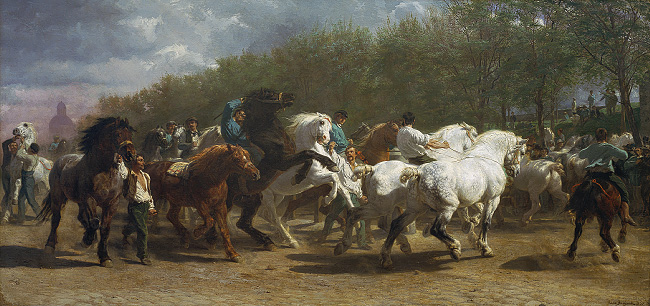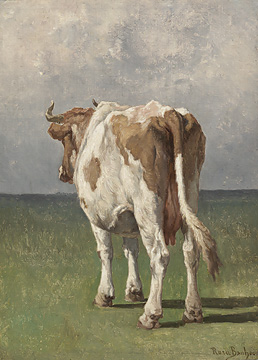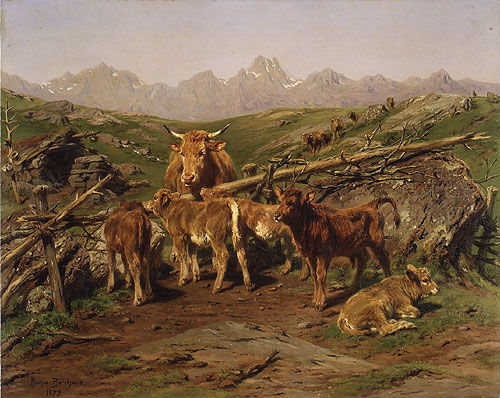<Back to Index>
- Physicist Georg Simon Ohm, 1789
- Painter Marie-Rosalie Bonheur, 1822
- Shah of Iran Reza Shah Pahlavi, 1878
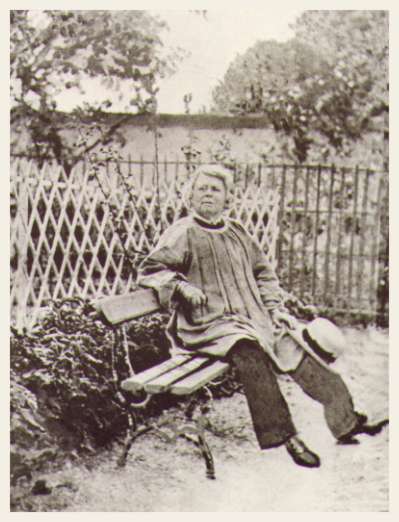
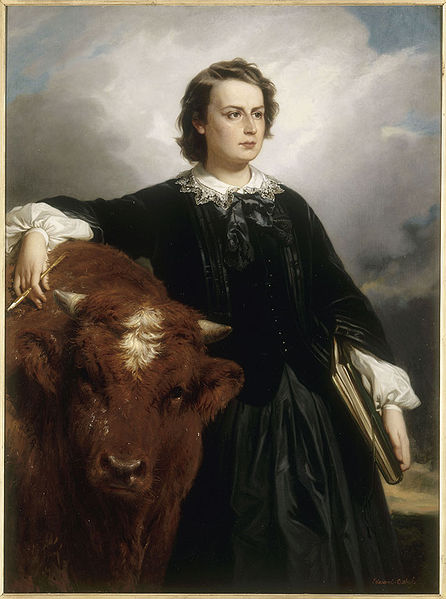
Rosa Bonheur, née Marie-Rosalie Bonheur, (March 16, 1822 – May 25, 1899) was a French animalière, realist artist, and sculptor. As a painter she became famous primarily for two chief works: Ploughing in the Nivernais (in French Le labourage nivernais, le sombrage ), which was first exhibited at the Salon of 1848, and is now in the Musée d’Orsay in Paris depicts a team of oxen ploughing a field while attended by peasants set against a vast pastoral landscape; and, The Horse Fair (in French Le marché aux chevaux), which was exhibited at the Salon of 1853 (finished in 1855) and is now in the Metropolitan Museum of Art, in New York City. Bonheur is widely considered to have been the most famous woman painter of the nineteenth century.
Bonheur was born in Bordeaux, Gironde, the eldest child in a family of artists. Her father Raimond Bonheur was a landscape and portrait painter and an early adherent of Saint-Simonianism, a Christian-socialist sect that promoted the education of women alongside men. The Saint-Simonians also prophesied the coming of a female messiah. Her mother Sophie (née Marquis) who died when Rosa Bonheur was only eleven, had been a piano teacher. Bonheur's younger siblings included the animal painters Auguste Bonheurand Juliette Bonheur and the animal sculptor Isidore Jules Bonheur.
Bonheur was born in Bordeaux (where her father had been friends with Francisco Goya who was living there in exile) but moved to Paris in 1828 at the age of six with her mother and brothers, her father having gone ahead of them to establish a residence and income.
By family accounts, she had been an unruly child and had a difficult
time learning to read. To remedy this her mother taught her to read and
write by having her select and draw an animal for each letter of the alphabet. To this practice in the company of her doting mother she attributed her love of drawing animals. Although she was sent to school like her brothers, she was a disruptive force in the classroom and was consequently expelled from numerous schools. Finally, after trying to apprentice her to a seamstress Raimond
agreed to take her education as a painter upon himself. She was twelve
at that point and would have been too young to attend the École des Beaux-Arts even if they had accepted women. As was traditional in the art schools of
the period, Bonheur began her artistic training by copying images from
drawing books and by sketching from plaster models. As her training
progressed she began to make studies of domesticated animals from life, to include horses, sheep, cows, goats, rabbits and other animals in the pastures on the perimeter of Paris, the open fields of Villiers and the (then) still-wild Bois de Boulogne. At age fourteen she began to copy from paintings at the Louvre. Among her favorite painters were Nicholas Poussin and Peter Paul Rubens, but she also copied the paintings of Paulus Potter, Porbus, Léopold Robert, Salvatore Rosa, and Karel Dujardin. She also studied animal anatomy and osteology by visiting the abattoirs of Paris and by performing dissections of animals at the École nationale vétérinaire d'Alfort, the National Veterinary Institute in Paris.
There she prepared detailed studies which she would later use as
references for her paintings and sculptures. During this period, too,
she met and became friends with the father and son comparative anatomists and zoologists Étienne Geoffroy Saint-Hilaire and Isidore Geoffroy Saint-Hilaire by whom her father was employed to create natural history illustrations.
Rosa Bonheur received a French government commission which led to her first great success, Ploughing in the Nivernais, exhibited in 1849. Her most famous work was the monumental Horse Fair, completed in 1855, which measured eight feet high by sixteen feet wide. Its subject is the horse market held in Paris on the tree-lined boulevard de l’Hôpital, near the Pitié-Salpêtrière Hospital,
visible in the background on the left. It led to international fame and
recognition and that same year she travelled to Scotland, "en route"
meeting Queen Victoria, who admired her work, and where she completed sketches for later works including A Scottish Raid, completed in 1860, and Highland Shepherd. These were anachronistic pieces as they depicted a way of life in the Scottish highlands that had disappeared a century earlier. Nonetheless, they had enormous appeal to Victorian sensibilities. She was especially popular in England, though less so in her native France.
She was represented by private art galleries, and in particular that of Ernest Gambart (1814-1902),
which would purchase the reproduction rights to her work and sell
engraved copies of her paintings. It was Gambart who brought Bonheur to
the United Kingdom in 1855. Many engravings were created by the skillful Charles George Lewis (1808-1880), one of the finest engravers of his day. Gambart sold through his gallery in London's Pall Mall. Due to a tendency in 1980s-1990s academic criticism to locate Bonheur as a proto-Feminist and as a pivotal figure for Queer theory,
she is perhaps most famous today because she was known for wearing
men's clothing and living with women. Her work and artistic talent has
now become somewhat secondary in importance to her manner of dress, her
choice of companions and her penchant for smoking cigarettes. On
her wearing of trousers, she said at the time that her choice of attire
was simply practical as it facilitated her work with animals: "I was
forced to recognize that the clothing of my sex was a constant bother.
That is why I decided to solicit the authorization to wear men's
clothing from the prefect of police. But the suit I wear is my work
attire, and nothing else. The epithets of imbeciles have never bothered
me...." She died at the age of 77, at Thomery (By), France. Many of her paintings, which had not previously been shown publicly, were sold at auction in Paris in 1900.
